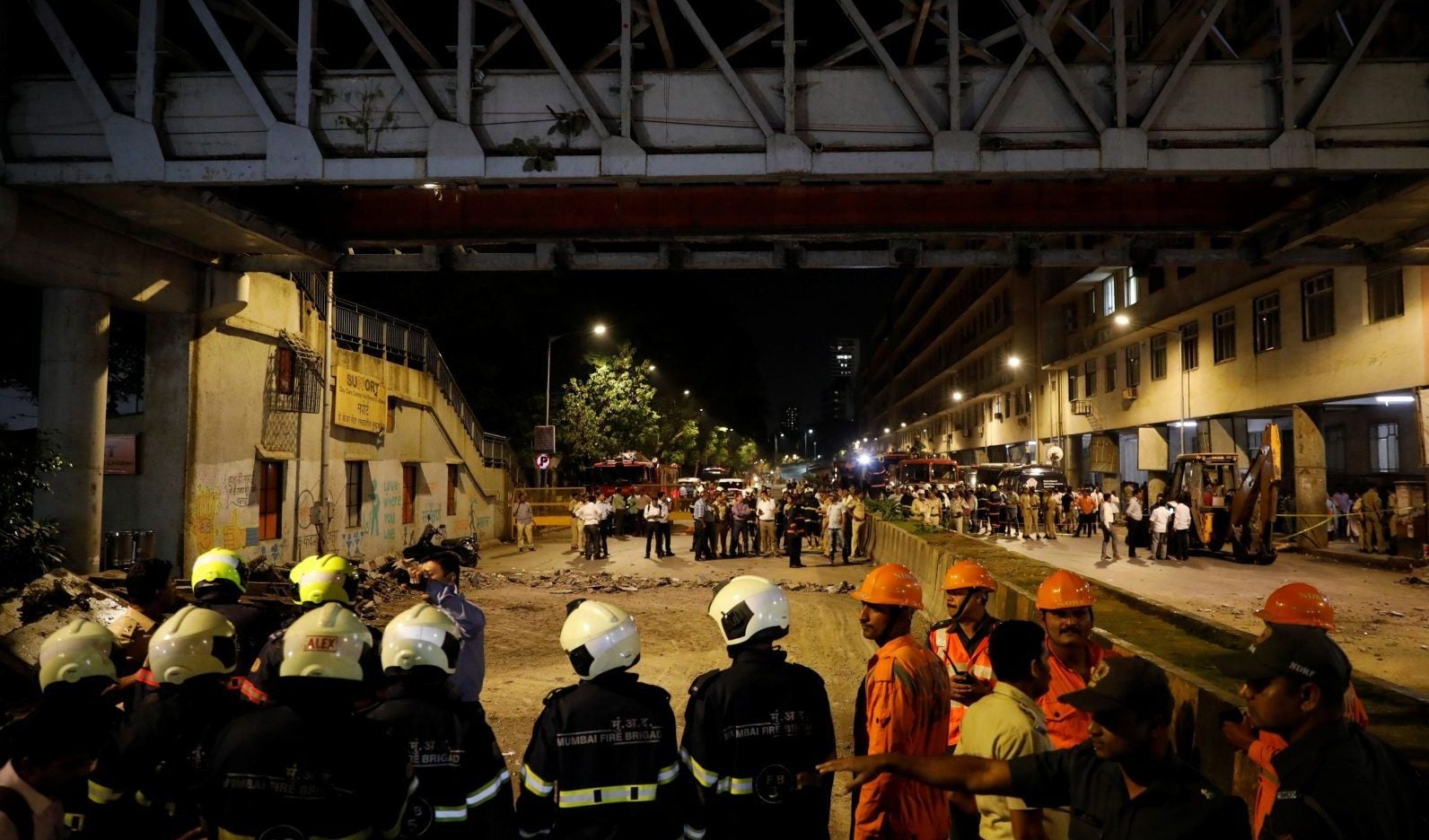Creaky foot-bridges in India’s financial capital have killed over 30 people in 18 months
India’s financial capital is living through yet another man-made trauma.


India’s financial capital is living through yet another man-made trauma.
At least six people reportedly died and 36 were injured yesterday (March 14) in Mumbai when a foot overbridge near the city’s railway nerve centre, Chhatrapati Shivaji Maharaj Terminus (CSMT), collapsed during the evening peak hour rush.
This is the third such incident in the past 18 months, which has claimed a total of 30 lives.
The CSMT bridge was, ironically, marked “safe” following a structural audit done late last year by a consultant appointed by the Brihanmumbai Municipal Corporation (BMC), the city’s civic body. The audit came in the aftermath of a September 2017 stampede at central Mumbai’s Prabhadevi (formerly Elphinstone) station bridge. A total of 296 bridges were inspected, 18 of which were deemed unfit and were to be demolished. The one at CST had passed the cut.
Barely six feet wide, the Prabhadevi structure was used by over 10 million people during peak hours everyday. Rumours of a short-circuit sparked panic among commuters and led to a stampede—a disaster many had warned of. The Indian Army was called in to construct a new foot overbridge at the station.
A few months later, in July 2018, a bridge near the Andheri railway station in the city’s western suburbs came tumbling down. Two people lost their lives, but a bigger crisis was averted as no trains were passing under it at that moment. The very next week, reports emerged of a bridge at a south Mumbai railway station developing cracks due to the rains.
In short, there’s been no dearth of red flags.
Built in 1988, the bridge took commuters from CSMT to the city’s arterial Dr Dadabhai Naoroji Road. Eyewitnesses say repair work on it had taken place on the morning of the collapse.
Soon after yesterday’s incident the BMC was quick to apportion the blame: “Railways is responsible for this incident. This bridge is (currently) the property of railways,” Yashwant Jadhav, standing committee chief of the BMC, told television news channels. “It was BMC’s responsibility to maintain this bridge. We had asked railways to give us NOC (no objection certificate) for full repairing work, but they haven’t given us (the) NOC. If we had got the NOC, the standing committee would have definitely passed the budget to repair this bridge. But we haven’t got the NOC.”
Crumbling Mumbai
Bridge collapses are only one among the many showpieces of Mumbai’s infrastructural mess for which BMC, Asia’s richest municipal corporation, has routinely been pulled up, but to no avail.
The world’s second-most populous city is also one of its most densely populated (26,357 people per square kilometre).
The city’s infrastructure, though, has not kept pace with the rise in its population. The cracks in town planning are exposed routinely during the annual monsoon when flooding and building collapses bring the city to a standstill.
Mumbai’s local train network, which carries a staggering 8 million or more people a day—equivalent to the population of Switzerland—is the worst hit during rains.
Then there are also the recurring killer fire accidents. Overall, it is estimated that Mumbai needs $800 billion to fix its infrastructure, according to the World Economic Forum.
Yet, the state of Maharashtra, whose capital is Mumbai, has been obsessing over mega projects like a Rs4,000-crore (577.8 million) giant statue in the sea and a Rs13,000-crore coastal road.